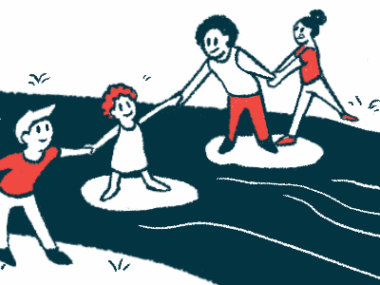Spreading EDS Awareness Is Critical
Written by |

Life has continued to be a stressful whirlwind of teaching, college counseling, and just trying to manage the all-hands-on-deck reality of working in a school that’s back in session with kids on campus. It’s going about as well as anyone could’ve hoped, but that doesn’t mean it’s easy for teachers or students.
Students have much less freedom, and teachers have more duties, longer classes, and a higher general stress level. As someone with multiple layers of responsibility, the past few weeks have been interesting, to say the least.
Thankfully, I have my horses, which always provide a much-needed respite from the stress of my current, everyday life. At the barn, COVID-19 doesn’t impact too much other than making sure to keep your hands clean and wipe down common surfaces like door handles and latches. The barn is open on both ends, high-ceilinged, and airy, and we’re easily able to maintain distance from one another.
Despite keeping our distance, it’s still so normalizing to be able to chat with friends. I talked with someone last night who asked about my Ehlers-Danlos syndrome (EDS) because someone she cares about has similar symptoms. She asked how I was diagnosed.
I started to tell her about my main symptoms, such as hyperflexibility, super flat feet, a high-arched palate in my mouth, and weirdly soft and stretchy skin. She replied that not all of those fit, and I explained that not only are there multiple subtypes — 13, as of the last classification from 2017 — but that each person can manifest symptoms differently within each subtype.
She was astounded, and I have to say, it’s pretty bizarre when you think about it. I didn’t even know there were that many subtypes until recently, so why would someone who is unfamiliar with EDS have any idea?
That’s one of the hardest parts of recognizing and seeking a diagnosis for EDS. Because it can manifest so differently in each person, even a savvy individual researching their symptoms may not come across information that seems to align with their experience.
I don’t know that there’s a solution here, but it’s something to keep in mind. When talking with my friend, I told her how EDS can show up differently in each individual, so the best approach is to seek out a physician familiar with the disorder for a possible diagnosis. The more we can spread awareness, the better!
***
Note: Ehlers-Danlos News is strictly a news and information website about the disease. It does not provide medical advice, diagnosis, or treatment. This content is not intended to be a substitute for professional medical advice, diagnosis, or treatment. Always seek the advice of your physician or other qualified health provider with any questions you may have regarding a medical condition. Never disregard professional medical advice or delay in seeking it because of something you have read on this website. The opinions expressed in this column are not those of Ehlers-Danlos News or its parent company, Bionews, and are intended to spark discussion about issues pertaining to Ehlers-Danlos.






Leave a comment
Fill in the required fields to post. Your email address will not be published.